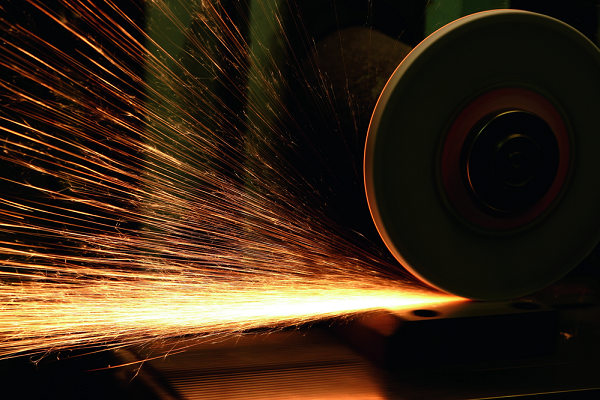The Anti-Wear Properties of Aluminum Oxide
Industrial wear applications demand rugged solutions. Whether you are cutting or finishing metallic workpieces, any process where abrasion is the central principle requires high-performance materials with exceptional wear-resistant qualities. Aluminum oxide (Al2O3) is one of the foremost abrasive grains used in cutting tools today. But why has alumina emerged as the fine ceramic of choice for precision grinding wheels and other cutting tools?

Understanding Thin Wheel Performance
Here we refer to various types of grinding wheels as an example to extol the values of aluminum oxide in wear applications.
Your typical thin wheel is a multipoint cutting solution composed of engineered abrasive grains held together by a binder. An electrical motor drives the grinder at high revolutions per minute (RPM) as an operator applies the abrasive wheel to the cutting surface. Rates of material removal and the quality of the surface finish are primarily determined by the abrasive’s tribological properties – and to a lesser extent the porosity of the bonding phase.
Wear Properties of Brown Fused Aluminum Oxide
Commodity brown fused aluminum oxide (BFA) is routinely used as an abrasive in mounted wheels, surface grinders, thin wheels, and other cutting tools due to its decent wear-resistant properties. It facilitates good grinding performance with similar wear behaviour to other performance abrasives, beginning with extremely high initial cutting action before plateauing to a steady-state wear regime and finally losing surface finish uniformity as the wheel itself begins to degrade.
Drawbacks of Commodity Aluminum Oxide Abrasives
Abrasive cutting and grinding rely on harsh forces to rapidly remove surface material from workpieces with high efficiency. Although aluminum oxide grains are much harder and tougher that most metal substrates, they will gradually succumb to compressive and tensile stresses which initiate fractures that can result in tool failure. This is par for course in most industrial wear applications, but it still represents an ongoing cost.
Advantages of Engineered Aluminum Oxide Grains
Improving efficiency and reducing avoidable operating expenses is paramount for any industry. But these two parameters have always seemed at odds in cutting and finishing applications, as greater cutting rates typically came with increased material costs. Engineered aluminum oxide grains represent a favorable solution to this problem.
Monocrystalline corundum abrasives are electro-fused grains derived from high-purity aluminum oxide. Unlike commodity alumina, these precision grains boast finely-tailored particle size distributions (PSDs) and enhanced particle morphologies which impart multiple sharp, strong edges to each individual crystal. This simultaneously contributes to greater bonding affinities and sharper cutting actions.
MMA88K is one-such monocrystalline aluminum oxide abrasive known for its unique microfracture capabilities and underlying Vickers hardness ratings of 22.1 GPA. This promotes exceptional grinding efficiency, with estimated productivity increases of 20% over conventional brown fused alumina abrasives.
If you would like to learn more about monocrystalline aluminum oxide products from Saint-Gobain Abrasive Grains, why not contact a member of the team today?
